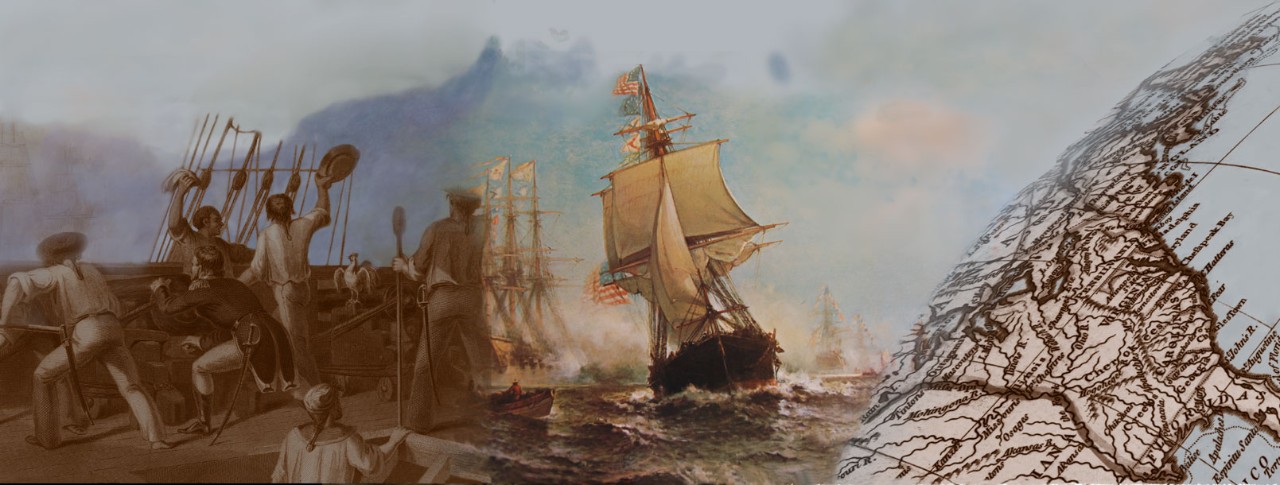
McCampbell, David
David McCampbell was born on 16 January 1910 in Bessemer, Alabama. Appointed to the Naval Academy from Florida, he graduated in June 1933. However, economy measures resulting from the Great Depression delayed receipt of his commission as an Ensign in the regular Navy until a year later. Reporting to USS Portland, he later served with Scouting Squadron Eleven on board that cruiser. In May 1937, he was promoted to Lieutenant Junior Grade and soon began flight training at Naval Air Station, Pensacola, Florida. Designated a Naval Aviator in April 1938, he served with Fighting Squadron Four (VF-4) on USS Ranger. Later transferred to the Air Group on the new aircraft carrier Wasp, McCampbell was promoted to Lieutenant in May 1941. On 15 September 1942, during the Guadalcanal Campaign, Wasp was sunk by Japanese submarine I-19. A month later he was promoted to Lieutenant Commander and returned to the United States, subsequently serving at Naval Air Stations at Jacksonville and Melbourne, Florida.
Prior to his January 1944 promotion to Commander, McCampbell commanded Fighting Squadron 15 (VF-15), attached to USS Essex, and shortly afterwards was placed in charge of that ship's air group. Leading his aviators against an attacking force of eighty Japanese aircraft during the Battle of the Philippine Sea on 19 June 1944, he destroyed seven of the enemy planes. Four months later, during the Battle of Leyte Gulf on 24 October, he shot down nine more, disorganizing a sixty plane hostile strike group. For his "conspicuous gallantry and intrepidity" on these occasions, McCampbell was awarded the Medal of Honor. During his tour of duty as Essex's Air Group Fifteen, he became the U.S. Navy's leading ace, credited with downing a total of 34 Japanese aircraft. The entire air group was credited with 315 planes shot down in aerial combat, 348 more destroyed on the ground, nearly 300,000 tons of enemy shiping sunk and an even greater tonnage damaged.
From March 1945 until January 1947, McCampbell served as Chief of Staff to Commander, Fleet Air, Quonset Point, and as Commander, Carrier Air Groups, Hampton Roads, Virginia. He was then at the Armed Forces Staff College as both a student and as a staff member. In October 1948, he became the Senior Naval Aviation Advisor to the Argentine Navy. Service as Executive Officer of USS Franklin D. Roosevelt followed during most of 1951 and into the following year. Assigned to the Headquarters of Commander Aircraft Atlantic at Norfolk in March 1952, McCampbell was promoted to Captain in July. The following summer, he commanded the Naval Air Technical Training Center at Jacksonville, Florida, then had duty as Flight Test Coordinator at Naval Air Test Center, Patuxent River, Maryland. After a 1956-1958 tour with Commander, Sixth Fleet, he was Captain of the oiler Severn and, in 1959-1960, the aircraft carrier Bon Homme Richard. Beginning in May 1960, he served in the Nation's Capital with the Joint Chiefs of Staff and the Bureau of Naval Personnel. In August 1962, Captain McCampbell received orders to the staff of Commander in Chief, Continental Air Defense Command. He retired from active duty in 1964. David McCampbell died on 30 June 1996 and is buried at Arlington National Cemetery, Arlington, Virginia.
USS McCampbell (DDG-85), (2002-____), is named in honor of Captain David McCampbell.
This page features all the images we have concerning David McCampbell.


